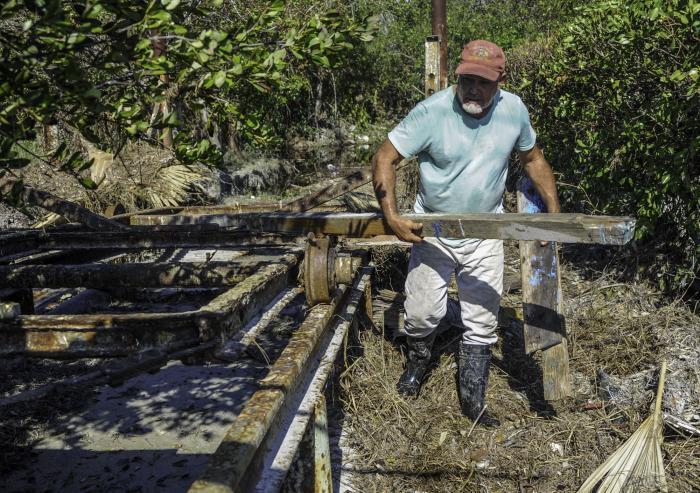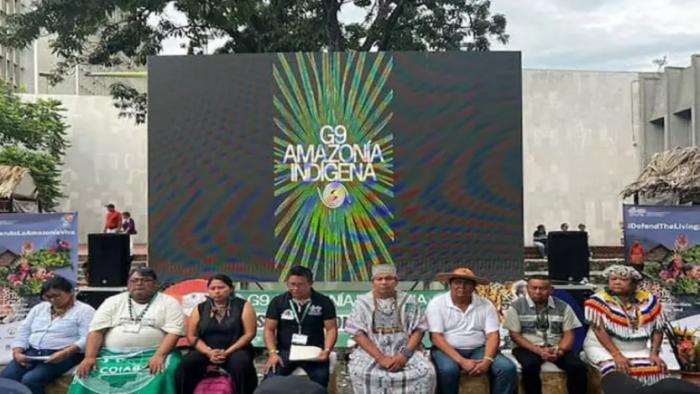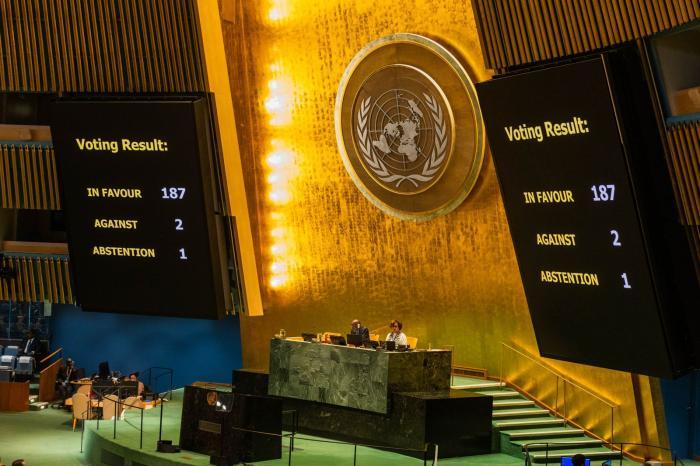An emphatic victory for Cuba at the UN: 187 votes against the U.S. blockade
 30 October 2024
30 October 2024


Photo: Cubaminrex
A new emphatic victory for Cuba at the United Nations General Assembly took place on Wednesday, after 187 nations voted in favor of the resolution Necessity of ending the economic, commercial and financial blockade imposed by the United States of America against Cuba.As part of the voting process, two nations (the United States and Israel) maintained their historic position against the document and one (Moldova) abstained.From March 1, 2023 to February 29, 2024, the U.S. blockade caused damages and material losses to Cuba estimated in the order of 5 56.8 million dollars, which means an increase of 189.8 million dollars compared to the figure reported in the previous report. This represents an approximate damage of more than 421 million dollars a month, more than 13.8 million dollars a day, and more than 575,683 dollars in damages for each hour of blockade.At current prices, the accumulated damages during more than six decades of application of this policy amount to 164,141.1 million dollars. If we take into account the behavior of the dollar against the value of gold in the international market, the blockade has caused quantifiable damages of more than 1 trillion 499 billion 710 million dollars.This is what Cuba's Foreign Minister Bruno Rodríguez Parrilla said on Thursday -when presenting to the national and foreign press the updated report on the damages caused by the longest and most comprehensive embargo in history-, who argued that, in the absence of the blockade, it is estimated that Cuba's GDP could have grown by around 8% in 2023.These data show that the current challenges of the Cuban reality would have a better and easier solution if Cuba could have at its disposal the substantial resources of which the blockade deprives it.During the period covered by the analysis, U.S. actions focused on identifying and pursuing the main sources of income of the Cuban economy, in strict application of the provisions of the Helms-Burton Act, including those stipulating its extraterritorial scope.In this sense, the unilateral measures with the greatest impact on the Cuban population and economy remained unchanged, which reproduced and aggravated the effects of this unilateral coercive system.
Photo: Cubaminrex
Among the latest steps taken by the administration occupying the White House, the Foreign Minister summarized the ceasing, in May 2024, of the unjustified practice of labeling Cuba as a State that does not fully cooperate with that country's anti-terrorist efforts.That qualification, he said, constituted one more false accusation, but with no practical impact since it did not entail unilateral coercive economic measures. This means that this decision did not imply the easing or lifting of any of the measures that are part of the blockade, nor of the additional ones that cause the presence of the Caribbean nation on the list of alleged State sponsors of terrorism.“It was a limited decision, which makes even more confusing and unjustifiable the permanence of Cuba in that list, in which it should never have been included”, he claimed. Likewise, he argued that the U.S. announcements issued on the 28th of that same month on some changes in the regulatory framework of the blockade referring to the private sector, did not modify the fundamental body of this policy either.They do not eliminate or modify the coercive measures that today most affect the economy and public services, but “respond to the objective of fragmenting Cuban society and punishing the sector”.Rodríguez Parrilla mentioned that the offensive against tourism, the allegation of non-existent sonic attacks on U.S. diplomats as a justification to qualify Cuba as an unsafe country, the persecution of international medical cooperation agreements, among others, respond to a perfected design, aimed at preventing the entry of essential income to meet the growing needs of the population.The U.S. administration cleared up any doubt as to the cruel and genocidal nature of the blockade when it used the worst moment of the COVID-19 pandemic to impose additional measures on Cubans: it reinforced the prohibition of imports such as pulmonary ventilators; it applied measures that affected the industrial scale of Cuban vaccines against the virus and even prevented the import of oxygen from third countries.All the difficulties of Cuban society are not exclusively due to the blockade -the Minister of Foreign Affairs acknowledged-, “but whoever does not identify it as the main obstacle to our development would be untruthful. No country, even with much more prosperous and robust economies, could face such a merciless aggression”.THE BLOCKADE IN FIGURES 25 days of blockade are equivalent to the financing required to cover the needs of the country's Basic List of Medicines for one year (approximately 339 million dollars). 9 days equals the amount required to import the medical consumables (cotton, gauze, syringes, needles, sutures, catheters, equipment for serum, among other supplies) and the reagents necessary for the national health system for one year (129 million dollars). 21 hours of embargo is equal to the cost of acquiring the insulin needed to cover the country's demand for one year (US$12 million). 18 days is equal to the annual cost of maintenance (excluding fuel and investments) of the National Electric Power System (250 million dollars). 4 months correspond to the amount to guarantee, for one year, the delivery of the standardized family basket of products to the population (1.6 billion dollars). 38 hours reach the same level as the price of production/acquisition of the material basis of study required by the country to cover the needs of the educational system for one year (US$21,789,000). If the blockade were to cease for eight hours, Cuba would be able to acquire the toys and teaching aids for all the children's daycare centers in the country (US$4,500,000). Half an hour is equivalent to the cost of the electric and conventional wheelchairs required to meet the needs of the country's special education system (US$ 256,363). 44 hours are equivalent to the funding needed to guarantee computers in the country's educational centers (US$25,200,000). 15 minutes corresponds to the funding needed to cover the demand for hearing aids for children and adolescents with disabilities in special education in the country (US$144,000). Three days are synonymous with the cost of annual maintenance of public transportation in the country (US$40 million). Nine months is equivalent to the estimated financing needed to cover the country's new housing construction needs (US$3,893 million).
Related News

Recovery progresses in Artemisa, the most damaged area in the country

Indigenous peoples of the nine Amazon countries launch G9

Cyclonic alarm phase is declared for the provinces from Villa Clara to Pinar del Río, and...

